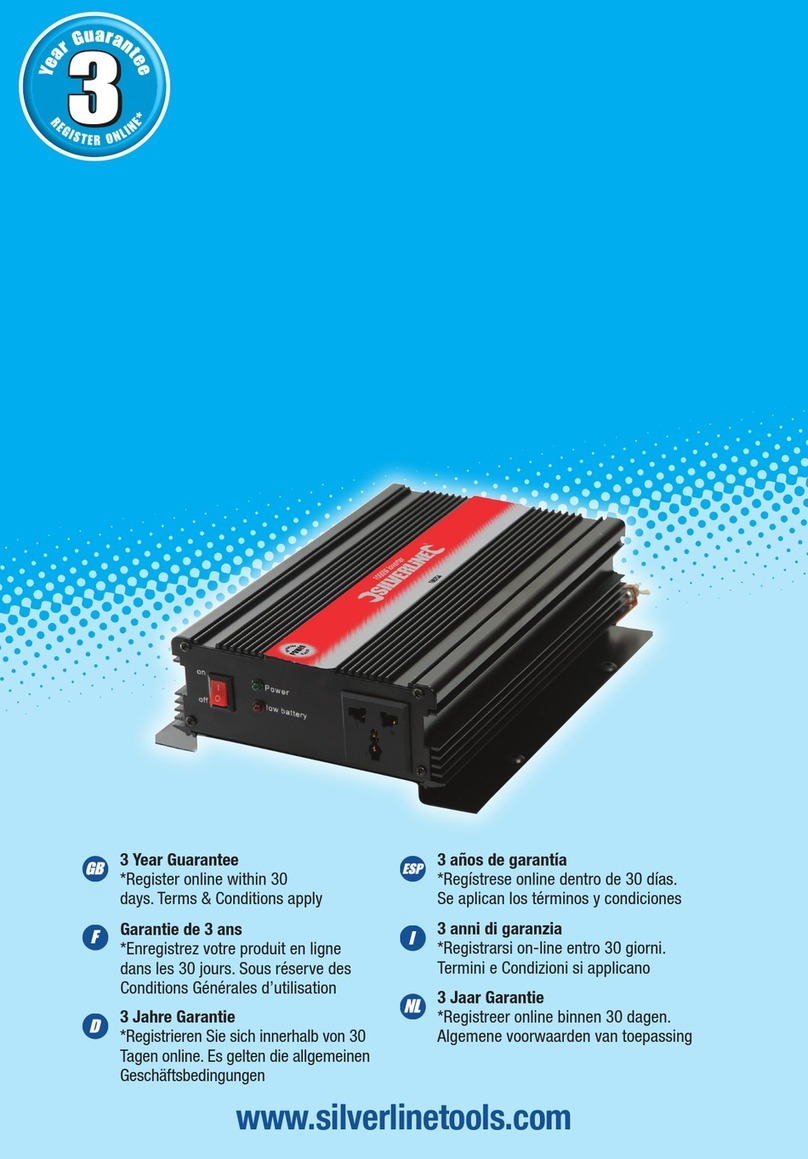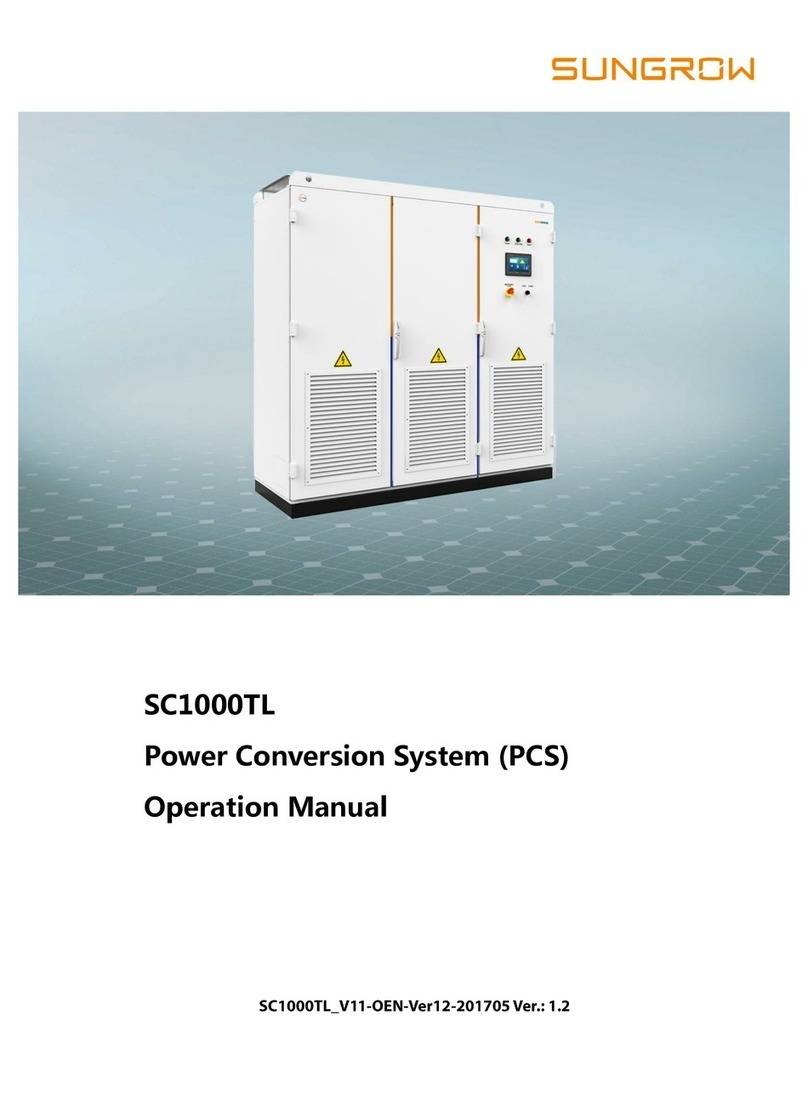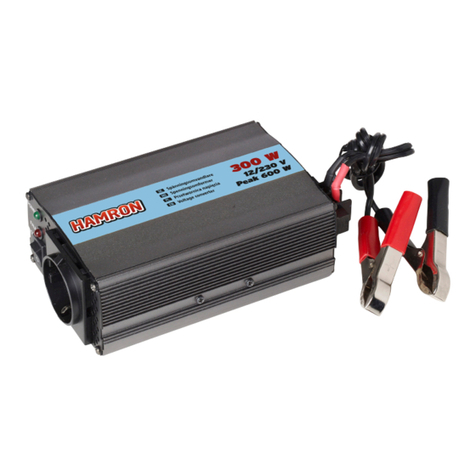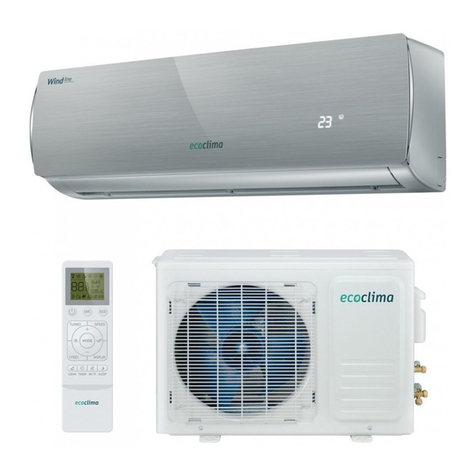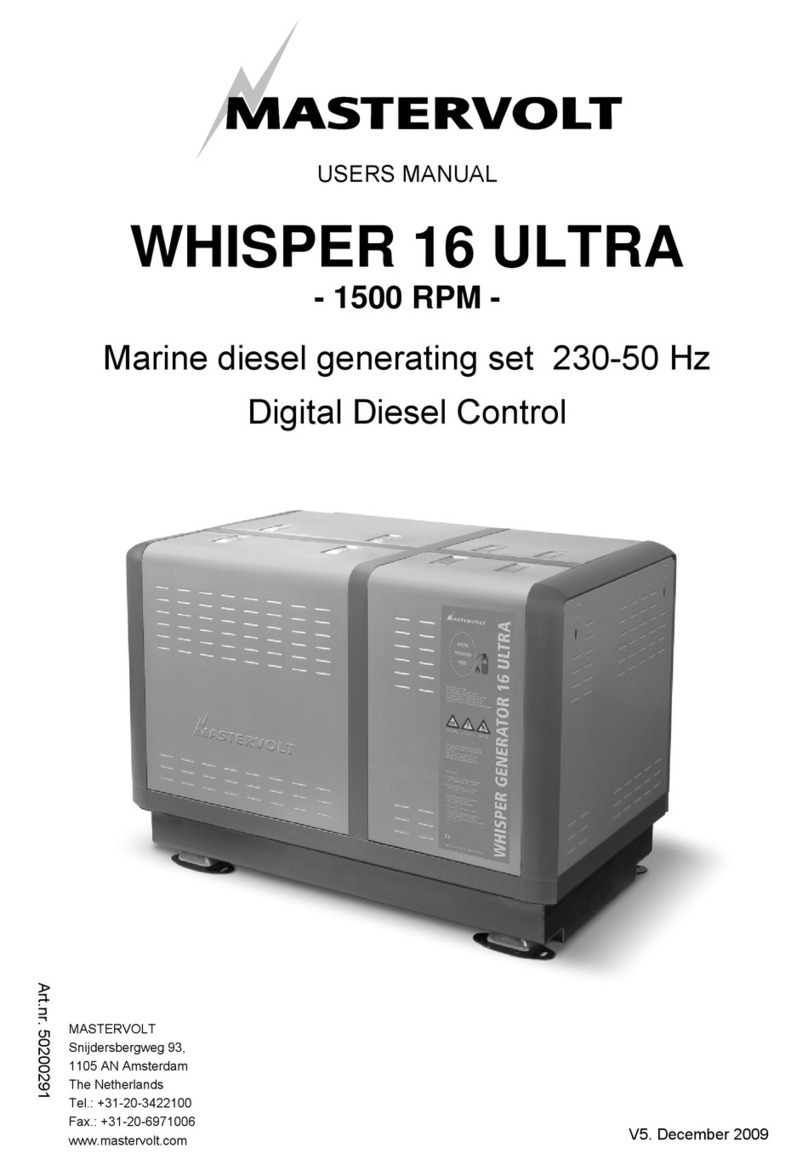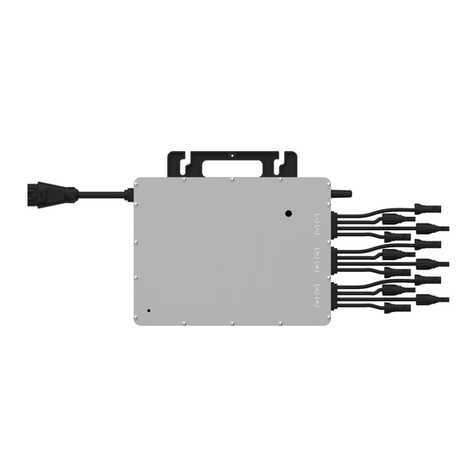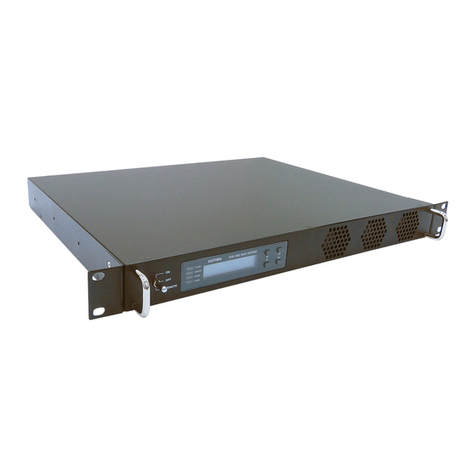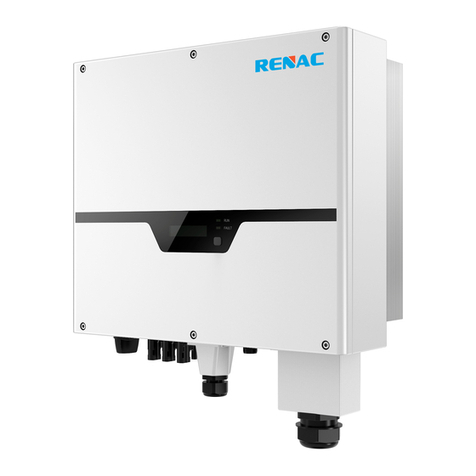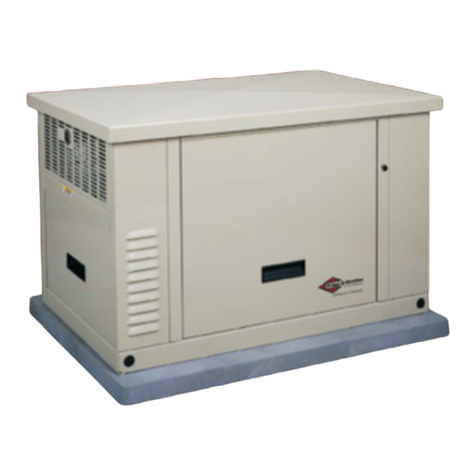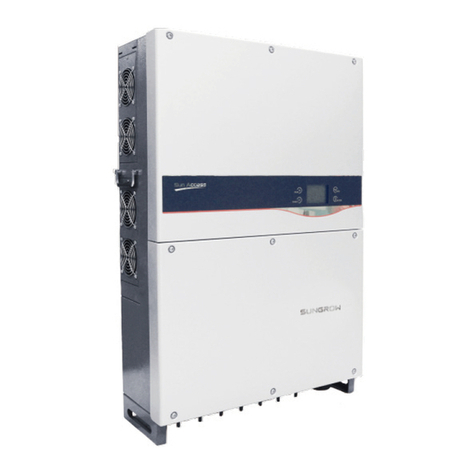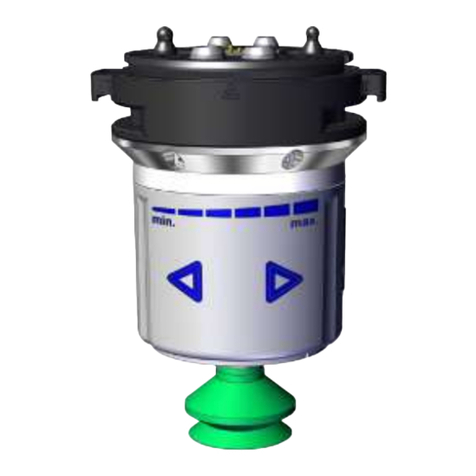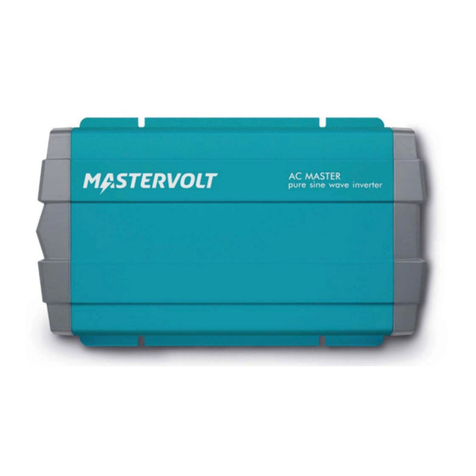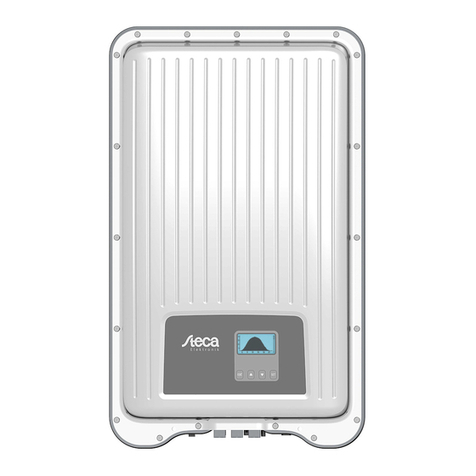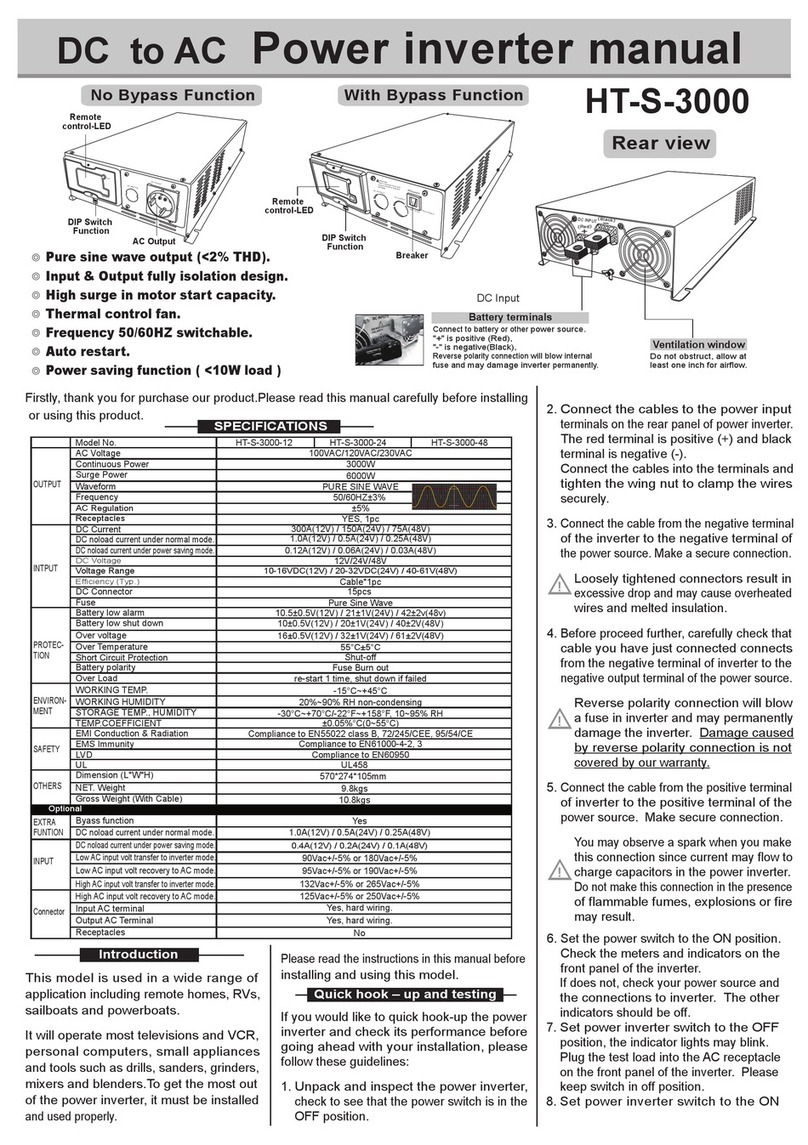Gebwell T3 User manual

Installation, operation and
maintenance manual
T3 Inverter and Gemini Inverter
heat pump
WWW.GEBWELL.COM

2 Gebwell T3 Inverter | Gemini Inverter installation manual
Contents
1WARRANTY ................................................................................................................................................................. 4
2INSTALLATION RECORD:....................................................................................................................................... 6
3GROUND SOURCE HEAT AND GROUND SOURCE COOLING........................................................................ 8
3.1 Heat from the ground .................................................................................................................................................................8
3.2 Ground source cooling ...............................................................................................................................................................8
3.3 Operating principle of a heat pump ............................................................................................................................................8
3.4 Heating functions .....................................................................................................................................................................10
3.5 Tips for making savings ...........................................................................................................................................................11
4IMPORTANT .............................................................................................................................................................. 11
4.1 Serial number ...........................................................................................................................................................................11
4.2 Safety instructions ....................................................................................................................................................................12
4.3 Hazardous substances...............................................................................................................................................................12
5DELIVERY AND HANDLING.................................................................................................................................. 13
5.1 Content of the delivery .............................................................................................................................................................13
5.2 Optional accessories .................................................................................................................................................................13
5.3 Storage......................................................................................................................................................................................13
5.4 Transportation ..........................................................................................................................................................................13
5.5 Removing the packaging ..........................................................................................................................................................13
5.6 Scrapping..................................................................................................................................................................................13
5.7 Handling the housing panels.....................................................................................................................................................13
5.8 Heat pump placement...............................................................................................................................................................16
6DIMENSIONS AND PIPE CONNECTIONS ........................................................................................................... 17
6.1 Pipe connections.......................................................................................................................................................................17
6.2 Heat pump dimensions .............................................................................................................................................................17
6.3 Structure of the heat pump .......................................................................................................................................................20
6.4 Heat pump sensors....................................................................................................................................................................22
7PIPE INSTALLATION .............................................................................................................................................. 23
7.1 General .....................................................................................................................................................................................23
7.2 Collector circuit........................................................................................................................................................................25
7.3 Heat supply circuit....................................................................................................................................................................29
7.4 Domestic water system.............................................................................................................................................................32
7.5 Connection options...................................................................................................................................................................33
8ELECTRICAL CONNECTIONS .............................................................................................................................. 37
8.1 General .....................................................................................................................................................................................37
8.2 Power supply............................................................................................................................................................................37
8.3 Connecting the sensors.............................................................................................................................................................37
8.4 Connection of the domestic water resistor (K6) .......................................................................................................................39
8.5 Change-over valve connection (Y3).........................................................................................................................................39
8.6 Sequence-controlled additional heat, heating accumulator’s resistors (K28/K29) ...................................................................39
8.7 Additional regulated heat, additional heat source (Y27) ..........................................................................................................40
8.8 Connecting the domestic water circulator pump ......................................................................................................................40
8.9 Continuous alert .......................................................................................................................................................................40
8.10 Connection of the external source pump (GEMINI) ................................................................................................................41
8.11 External control to the source pump.........................................................................................................................................41
8.12 Connecting accessories.............................................................................................................................................................41
8.13 Connecting an expansion card..................................................................................................................................................41
8.14 Connecting an external circulator pump...................................................................................................................................41
8.15 Heating control group (accessory)............................................................................................................................................41
8.16 Cascade connection ..................................................................................................................................................................42
8.17 Installation of a Modbus card ...................................................................................................................................................42
9FILLING and VENTING ........................................................................................................................................... 42
9.1 Filling the heating system.........................................................................................................................................................42
9.2 Filling the collector ..................................................................................................................................................................42
9.3 Pressure-testing the collector....................................................................................................................................................42
10 CHECKS BEFORE THE HEAT PUMP START-UP.............................................................................................. 44
10.1 Venting of air from the charge circuit with the built-in charge pump of the heat pump...........................................................44
10.2 Venting the collector with the source pump of the heat pump..................................................................................................44
11 THE HEAT PUMP START-UP ................................................................................................................................. 45
11.1 Operation without the collector and operating during construction..........................................................................................45

v1-1 12082021 3
12 HEAT PUMP SETTINGS...........................................................................................................................................45
12.1 HEAT PUMP ...........................................................................................................................................................................45
12.2 DOMESTIC WATER ..............................................................................................................................................................45
12.3 HEATING CIRCUIT 1/2 .........................................................................................................................................................46
12.4 Modbus communication...........................................................................................................................................................47
13 HEAT PUMP MAINTENANCE AND SERVICING ...............................................................................................49
13.1 Inspections ...............................................................................................................................................................................49
13.2 Draining heat pump fluids........................................................................................................................................................49
15 FAILURE .....................................................................................................................................................................50
15.1 Alerts........................................................................................................................................................................................50
15.2 Troubleshooting .......................................................................................................................................................................50
16 TECHNICAL DETAILS.............................................................................................................................................53
17 Performance value graphs...........................................................................................................................................55
18 SET POINT VALUES FOR HEAT PUMP SETTINGS IN DIFFERENT HEATING NETWORKS.................57
19 ENERGY LABELLING..............................................................................................................................................58
APPENDIX 1: DECLARATION OF CONFORMITY
APPENDIX 2: MODBUS REGISTERS
APPENDIX 3: GEBWELL CLI CONTROLLER MENU STRUCTURE
APPENDIX 2: ELECTRICAL DIAGRAM
KEEP THE OPERATION INSTRUCTIONS IN THE IMMEDIATE VICINITY OF THE DEVICE!
Read the instructions carefully before installing, adjusting or servicing the device. Always follow the instructions. The
installation technician must complete the installation record. The manufacturer’s warranty is only valid with an
installation log.
Fill in the details below. If there are problems with the device, these details must be available.
Ground source heat pump model: Serial number:
Plumbin
g
contractor:
N
ame:
Installation date: Phone:
Electrician:
N
ame:
Installation date: Phone:
MARKING:
The CE mark is the manufacturer’s declaration that the product conforms to EU legal requirements. Gebwell Ltd affirms that
the product meets all of the requirements of relevant EU directives. The purpose of the CE mark is to facilitate the free
movement of goods on the internal market in Europe.

4 Gebwell T3 Inverter | Gemini Inverter installation manual
1WARRANTY
Gebwell Ltd
issues this product,
T3 Inverter Heat Pump | Gemini Inverter Heat Pump
with the following warranty regarding manufacturing and material faults.
Warranty period and entry into force
Heat pumps come with a warranty of two (2) years starting from the
purchase date. In addition, the warranty can be extended with three
(3) years. The extended warranty of three years are granted to
ground source heat pumps installed by an installation company
authorised by Gebwell Ltd. and registered within six months after
the installation. The extended warranty does not apply to any
additional equipment, accessories or other system parts of ground
source heat systems. The start date of the warranty have to be
verified with a purchase receipt. If no receipt is presented, the
delivery date from the factory is considered as the warranty start
date.
The technician/retailer of the ground source heat pump completes
the installation record of the manual and goes it through with the
customer. Both parties verify that they have read and understood
the installation log, and they accept the installation by filling in the
respective data onto the registration form found on the Gebwell
Ltd.’s website. Registration will extend the warranty period with
three years. The customer will be provided with an e-mail
confirmation on the successful registration. If no confirmation is
delivered, the customer can ask for it directly from Gebwell Ltd.. If
the installation record has not been properly completed, the
extended warranty will not be valid.
Warranty content
This warranty covers manufacturing or material defects detected in
this product within the warranty period, as well as direct costs
resulting from repairing the device.
The buyer is liable for all defects caused due to the storage
conditions during the period between the delivery date and the
commissioning date (see the installation, operation and
maintenance manual; storage).
Warranty limitations
The warranty does not cover costs resulting from a defective device
(travel, energy, etc. costs), damage caused by a defective device,
the buyer’s production losses, profits not realised, or other indirect
costs.
This warranty has been provided on the ground that the product
functions correctly in normal use conditions and that the user
manual is carefully followed. The liability of the warrantor is
limited in accordance with these terms, and shall not therefore cover
any damages caused by the product to another object or person.
The warranty does not apply to direct personal injuries or damages
to property caused by a defective product delivered.
The warranty is granted on the condition that all effective
regulations, generally accepted installing methods and product
mounting instructions provided by the manufacturer have been
complied with.
The warranty does not cover and is invalid if the product is used in
any other way than required by the dimensions.
The customer is liable for inspecting visually the product before
installation. A product that is clearly defective must not be installed.
A requirement for the extended warranty is that the product is
registered within six months of installation.
The warranty does not include damage caused
•during transportation
•by negligence of the user of the product or overload of the
product, failure to observe the operating instructions or to
carry out care or maintenance
•by circumstances not dependent on the guarantor, such as
fluctuations in power supply voltage (voltage fluctuations can
be no more than ± 10%), thunderstorms, fires or accidents; by
service, repairs or structural alterations performed by parties
other than authorised repair services
•by installation or placement of the product in contravention of
the installation, operation and maintenance manual, or
otherwise incorrectly
Moreover, the warranty does not cover the repair of faults that are
insignificant in terms of the operation of the equipment, such as
superficial scratches. The warranty does not include normal
adjustments described in the operation manual, user guidance visits,
service and cleaning, or tasks due to negligence of the precautions
and installation instruction or investigations of the same.
The warranty terms in accordance with the joint recommendation
by the Association of Finnish Metal and Engineering Industries and
Kuluttajaneuvosto (Consumer Council) apply to matters not
covered by the foregoing.
Some features of the heat pump require a mobile data connection
(such as 3G or 4G). If the heat pump is installed in a location with
poor or non-existent mobile data connection, Gebwell cannot
guarantee the proper operation of all the features (such as remote
access).
Gebwell is not be responsible for the operation of mobile data, and
if you want to improve its functionality by using amplifiers, for
example, Gebwell is not responsible for the resulting costs.
The warranty becomes invalid if the product
•is modified or repaired without Gebwell Ltd’s consent
•is used for a purpose for which it is not intended
•is stored in humid or otherwise inappropriate conditions (see
the installation, operation and maintenance manual)
Actions in the event of a fault
If a fault is detected during the warranty period, the customer must
immediately (normally within 14 days) report it to the authorised
Gebwell retailer that sold the product. The information to be
provided includes the equipment model and serial number of the
product as well as a detailed description of how the fault was found

v1-1 12082021 5
and the conditions under which it developedand/or can be detected.
The warranty form properly completed in relation to the purchase
must be presented upon request. After the warranty has expired, it
shall not be considered valid to invoke a defect reported during the
warranty period unless the defect was reported in writing during the
warranty period.
Defects must be reported as soon as they are detected. If a defect is
not reported as soon as the customer detects the fault, or when the
customer should have detected the fault, the buyer will lose his/her
right to a claim based on this warranty.
Servicing in Finland
Servicing for this product during and after the warranty period in
Finland is performed by the servicing organisation authorised by
the manufacturer throughout the economic service life of the heat
pump.
How to make a service request
Repairs under warranty, servicing requests and orders for spare
parts must be directed to the authorised Gebwell retailer that
sold/delivered the product. Before making a service request, please
ensure the following:
•read the installation, operation and maintenance manual
carefully and consider whether you have followed the manual
when using the device
•ensure that the warrantyperiod isstill valid, you have carefully
read the warranty terms and youknow the product’s model and
serial numbers before making a warranty repair request
•all parts belonging to the device to be returned must be packed
with the device
•the device to be returned must be packed in such a way that
handling it does not have adverse effects on health or the
environment
The device replaced under warranty is the manufacturer’s property.
Gebwell Ltd reserves the right to decide how, where and who will
perform the repair or replacement under the responsibility of the
manufacturer.
Gebwell Ltd. is not liable for breakdown of an incorrectly
installed device.
The device may only be repaired by a professional designated by
Gedwell Oy. Faulty repairs and installations may cause danger to
the user, damage to the device and weaken the efficiency of the
device. Please bear in mind that a visit by a retailer or service
technician is not free, even during the warranty period, if repairs are
required due to faulty installation, repair or adjustment.

6 Gebwell T3 Inverter | Gemini Inverter installation manual
2INSTALLATION RECORD:
The heating system must be inspected in accordance with applicable regulations before commissioning. The inspection must
be performed by a qualified person. The installation record should be completed before the equipment is handed over to the
end-user. A completed installation record is a precondition for the validity of the warranty.
Inspected Description Comment
COLLECTOR CIRCUIT:
Circulation direction checke
d
S
y
stem
p
ressure-teste
d
S
y
stem rinse
d
S
y
stem ble
d
Fluid quantit
y
in the collecto
r
Operatin
g
pressure of the collector
_______
ba
r
Strainer checked/cleane
d
Expansion tan
k
Initial pressure of the expansion tank (0.5 bar)
Strainer/flow direction
Safet
y
valve checke
d
Shu
t
-off valves checke
d
Len
g
th of the collector
m
- If there are several loops, record the len
g
ths:
m
Checked by (date)
HEATING SYSTEM:
S
y
stem fille
d
Operating pressure of the heating system
______
ba
r
Accumulator coil filled / bled (coil
accumulator)
S
y
stem pressure-teste
d
S
y
stem rinse
d
S
y
stem ble
d
Safet
y
valve
Diaphra
g
m expansion tan
k
Initial pressure of the expansion tan
k
Strainer checked/cleane
d
Pressure measurin
g
device
Shu
t
-off valves
Fillin
g
valve
Buffer tan
k
Heatin
g
circuit control se
t
Circulator pumps
Rotation direction of pumps
Actuators
Checked by (date)
DOMESTIC HOT WATER:
S
y
stem fille
d
S
y
stem pressure-teste
d
S
y
stem rinse
d
Safet
y
valve
Pressure measurin
g
device
Buffer tan
k
Hot water circulation
Checked by (date)

v1-1 12082021 7
Inspected Description Commen
t
ELECTRICITY:
Buildin
g
fuses
Heat pump fuses
Phase sequence
Power suppl
y
Ad
j
ustment
g
roup(s)
Suppl
y
temperature sensor(s)
Room senso
r
Outdoor temperature senso
r
Checked by (date)
CONTROLLER:
Room set point for the heatin
g
circui
t
Heatin
g
curve
g
radient se
t
Minimum set point for supply water to the
heatin
g
circui
t
Maximum set point for supply water to the
heatin
g
circui
t
Checked by (date)
GENERAL:
Wiring in accordance with the installation
instructions
Connection seals
Device started up in accordance with the
instructions
Operation of the machine monitored on site
for 30 minutes
Checked by (date)
GUIDANCE FOR THE END USER:
Addin
g
fluid to the brine circui
t
Increasing the pressure of the heating
s
y
ste
m
Settin
g
the heatin
g
ad
j
ustment curve
App user interface
g
uidance
Checked by (date)
NOTE! By registering the heat pump within six months from its installation, you will get a five-year warranty for the it.
Register the installed heat pump on our website at www.gebwell.fi/rekisteroi-maalampopumppu/. You can also access the
registration page on a smartphone by using the QR code below. If you are unable to register the heat pump, call Gebwell Ltd
on +358 20 1230 800.
www.gebwell.fi/rekisteroi-maalampopumppu/

8 Gebwell T3 Inverter | Gemini Inverter installation manual
3GROUND SOURCE HEAT
AND GROUND SOURCE
COOLING
A well-designed ground source heat system with the
correct power values offers low operating costs and good
energy efficiency. The heat pump enables you to
efficiently heat your indoor air and domestic water. In the
summer, the system can also cool indoor air in an
environmentally friendly way.
3.1 Heat from the ground
The ground source heat pump collects heat from the
ground and brings it into the building. Heat can be
collected using either a network of pipes embedded in a
bored well, a heat collector pipes installed close to the soil
surface, or a network of pipes anchored to the bottom of a
body of water.
Bored well as a heat source
Soil as a heat source
Bodies of water as heat sources
Further information about heat collection systems and
their dimensions can be found on the websites of Gebwell
Ltd. and the Finnish Heat Pump Association (SULPU).
www.gebwell.fi
www.sulpu.fi
3.2 Ground source cooling
The low temperature of the brine can also be used to cool
your home. In the summer, free cooling energy can be
transferred from the ground using only a circulator pump.
The ground source heat system can be connected to the
ventilation fan convector or an underfloor heating/cooling
system designed for cooling.
3.3 Operating principle of a heat pump
The heat pump consists of four main components
•Evaporator
•Compressor
•Condenser
•Expansion valve
The solar energy stored in the soil is collected by the brine
circulating in the heat collector pipe networks.
In the evaporator (4), the energy contained in the brine is
transferred to the refrigerant, which absorbs the heat
energy as it evaporates. The brine returns to the ground
approximately 3°C cooler than when it came. The brine
entering the heat pump can be no colder than -5°C.
The pressure and temperature of the refrigerant increase
in the compressor (3). The refrigerant also absorbs the
heat energy created by the compressor’s work.
The warm refrigerant is transferred into the condenser (2).
The condenser transfers the heat energy from the
refrigerant into the water circulating in the house’s heating
system, which distributes it to heat the building and the
domestic water with the help of a change-over valve. The

v1-1 12082021 9
refrigerant condenses into a liquid state in the condenser
as it loses heat energy.
The pressure of the refrigerant remains high as the liquid
refrigerant is transferred to the expansion valve (6). The
pressure of the refrigerant decreases in the expansion
valve, and the temperature drops to approximately -10°C.
The expansion valve injects the correct amount of
refrigerant into the evaporator, where the heat energy
transferred from the brine causes the refrigerant to
evaporate.
Figure: Functional description T3 Inverter
1 Heat pump
2 Condenser
3 Compressor
4 Evaporator
5 Charge pump
6 Expansion valve
7 Source pump
8 Change-over valve
9 Heat collector, ground loop
10 Heat collector, bored well
11 Hot water accumulator
12 Heating accumulator tank
13 Domestic hot water control valve

10 Gebwell T3 Inverter | Gemini Inverter installation manual
Figure: Functional description Gemini Inverter
1 Heat pump
2 Condenser
3 Compressor
4 Evaporator
5 Charge pump
6 Expansion valve
7 Source pump
8 Change-over valve
9 Heat collector, ground loop
10 Heat collector, bored well
11 Hot water accumulator
12 Heating accumulator tank
13 Domestic hot water control valve
3.4 Heating functions
Domestic hot water
The heat pump outputs domestic water based on the tank’s
operational measurement sensor (B3). The temperature of
domestic hot water can be selected from the options, Eco,
Normal or Comfort.This selection affects the amount of
domestic hot water. When Comfort is selected, the heat
pump also uses an electric heater to heat domestic hot
water.
Heating
The heat pump outputs heating water directly into the
building’s heating network. Automatic adjustment
determines the set point for the supply water from the
heating circuit based on the set heating curve and the
outdoor temperature measurement. The controller uses the
set point for the supply water to determine the set point for
the heat pump, and the frequency-controlled compressor
uses this value to set itself to the correct rotation speed in
order to keep the temperature of the supply water at the
set point. The room sensor also affects the set point.
In order for the heat pump to operate at maximum
efficiency, the heating system and the collector circuit

v1-1 12082021 11
must be under ideal conditions. The difference between
the heating system’s output and return temperatures must
be 5–8°C, and the difference between the collector’s
output and return temperatures must be 3–4°C. If the
temperature differences deviate from these values, the
efficiency will decrease, along with the savings. The heat
pump’s controller ensures the correct temperature
difference for the heat supply and the source pump.
Factory settings:
Heating temperature difference: 5°C
Domestic hot water preparation temperature difference:
8°C
Collector temperature difference: 3°C
3.5 Tips for making savings
The heat pump is intended to generate the desired heat and
domestic water. The system attempts to meet these desires
by all available means within the limits of the set points.
Important factors affecting energy consumption are the
indoor temperature, the domestic hot water consumption,
the temperature of the domestic hot water, the quality of
the house’s insulation, and the desired level of comfort.
Keep the aforementioned factors in mind when changing
the device’s settings.
IMPORTANT!
Underfloor heating and radiator thermostats can have a
negative impact on energy consumption. They reduce the
flow rate in the heating system, and the heat pump
compensates for this by raising the temperature of the
network. This affects the device’s operation by causing
more electrical energy to be consumed. Thermostats are
only intended for adjustments due to “free heat” (from the
sun, people, fireplaces, etc.).
4IMPORTANT
These installation instructions describe installation and
maintenance measures that should only be carried out by
a professional.
The installation instructions should be given to the
customer in the manual folder.
After commissioning, the heat pump sends telemetry data
to the Gebwell Smart cloud automatically. Data storage in
the cloud enables the display of the device’s history data
in the Gebwell Smart control room and system
optimization. The data can also be used for maintenance
and product development purposes.
4.1 Serial number
Keep in mind that you will need to know the device’s
serial number whenever you contact the manufacturer,
maintenance or support services.
The serial number of the heat pump is on the ID plate
attached on top of the heat pump on the cover of the
control unit, under the cover plate. The cover can be lifted
from the front edge so that it remains on the hinges in the
rear edge.
T3 Inverter

12 Gebwell T3 Inverter | Gemini Inverter installation manual
Gemini Inverter
The cover can be locked in the upper position with the
latch on the left rear edge.
4.2 Safety instructions
The following safety instructions must be kept in mind
when handling, installing and operating the device.
•Only lift the device at the locations shown in the
instructions.
•The metallic edges of the heat pump could injure
your hands when you are hauling the unit. Use
slash-resistant gloves to move the heat pump.
•Always turn off the main power of the device
before performing any maintenance.
•Never jeopardise safety by bypassing safety
devices.
•The refrigeration compressor unit in the device
must only be serviced and repaired by a qualified
person.
•Do not rinse the heat pump with water.
•During installation, keep all of the device’s
housing panels intact to prevent water from
splashing onto the device’s electrical
components.
4.3 Hazardous substances
Electricity
The electrical components inside the heat pump carry a
potentially fatal voltage. Unplug the device before you
open the protective plate on the control unit or the
compressor module.
Refrigerant
The heat pump contains a refrigerant that is harmful and
hazardous to the environment. The refrigerant is in a
hermetically sealed refrigerant circuit in the compressor
module. If the refrigerant leaks into indoor premises, the
room must be thoroughly ventilated.
Heat collection liquid
The mixture of antifreeze agents, including ethanol, used
as the heat collection liquid are highly flammable. Avoid
splashing the liquid on your skin.

v1-1 12082021 13
5DELIVERYAND
HANDLING
5.1 Content of the delivery
•Gebwell T3 Inverter / Gebwell
Gemini Inverter Heat Pump 1
•Installation, commissioning and maintenance
manual 1
•Outdoor temperature sensor 1
•Room sensor 1
•External source pump (Gemini Inverter) 1
5.2 Optional accessories
•Collector valve group
•Heating control group
•Domestic hot water buffer tank
•Heating buffer tank
•Domestic hot water circulator pump series
•Diaphragm expansion tank for the collector
•Diaphragm expansion tank for heating
•Energy measurement
5.3 Storage
Before installation, the heat pump should be stored in its
shipping package in a warm, dry place. If the device is
stored in a cold or humid environment, the electrical
components may get wet, causing problems in the
operation of the device at a later stage.
5.4 Transportation
The panels on the exterior of the heat pump should be
removed if the device is being brought into a confined
space, and replaced once the device has been hauled
inside. The heat pump can be tilted temporarily but it must
not be left in a slanted position for long periods, even
during transportation. The maximum tilt angle for the heat
pump is 45°. The heat pump should not be turned onto its
side. However, if it is necessary to turn the heat pump onto
its side for reasons such as transportation, the compressor
unit can be removed during transportation. However, the
heat pump must not be transported upside down. If it is
necessary to tilt the heat pump, the heat pump must be left
in the vertical position for at least two hours before
starting up to ensure that the lubricating oil in the
compressor flows into the right place. The heat pump
should only be lifted by the pallet. The device must be
transported to the place of installation on the pallet.
5.5 Removing the packaging
The product is packaged in protective plastic in such a
way that it can be installed without removing the plastic.
The protective plastic can be retained to protect the heat
pump until it is started up.
•Ensure that you have received the correct product
with the correct accessories.
•Place the heat pump near the intended
installation location.
•Lift the heat pump off the shipping pallet.
•Use the leveling feet to get the heat pump into a
horizontal and stable position.
•Make sure the frame is not in contact with the
building’s structures, with the exception of the
leveling feet.
5.6 Scrapping
Classified as hazardous waste and should be taken to a
hazardous waste collection point.
A decommissioned heat pump contains heat transfer
agents and oil, which are hazardous substances.
For safety reasons, disassemble the equipment with an
installer qualified by Tukes as a refrigeration installer.
When disposing of the device, the refrigerant must be
recovered in accordance with local instructions and
regulations.
5.7 Handling the housing panels
Handling the front door
To open the heat pump door, lift the door up and pull
towards yourself. You can make lifting easier by lifting
the bottom edge with your foot. Hold the door firmly to
keep it from falling on you.
The front door of the heat pump must be removed for any
measures carried out inside the device. The door is put
back in place by lifting the bottom edge of the door in
position so that the lip at the bottom edge of the door goes
in the opening made for it in the bottom plate of the heat
pump, and the lip at the top edge of the door sets in place
at the top edge of the heat pump.
T3 Inverter

14 Gebwell T3 Inverter | Gemini Inverter installation manual
Gemini Inverter
Handling the side panels
The side panels of the heat pump can be removed to
facilitate maintenance work.
Remove the front door before removing the side panels.
Remove the side panels by opening the screws on the front
and rear edges of the device, after which the side panel is
pulled to the side.
T3 Inverter
Gemini Inverter

v1-1 12082021 15
Detaching the cover of the control unit
The cover of the control unit is attached with a hex screw.
You will need a 6-mm ring spanner or socket wrench to
open the cover.
T3 Inverter
Gemini Inverter
Opening the cooling module
The cooling module of the heat pump can be opened from
the front, sides and back to facilitate the maintenance of
the heat pump.
T3 Inverter
Gemini Inverter

16 Gebwell T3 Inverter | Gemini Inverter installation manual
5.8 Heat pump placement
The placement of the heat pump must take account of a
few factors related to safety, convenience and
serviceability.
The temperature of the placement location must be
between +5°C and +30°C. The installation space must be
adequately ventilated. Water condenses on the cold
sections of pipe in the collector if the space is very humid.
There must be a floor drain in the space in which the heat
pump is installed.
The heat pump’s compressor generates a noise that can be
carried by the structures of the house into other areas far
away. It is advisable to use flexible components for pipe
connections. The heat pump should beplaced in a location
where noise cannot be conducted in a way that adversely
affects residential premises. If necessary, supplementary
noise insulation can be installed in the wall structures
between the heat pump’s installation location and
residential premises, and additional rubber cushioning can
be fitted beneath the heat pump’s feet.
We recommend placing the heat pump in a separate utility
services room. Noise can be prevented from travelling
through structures by using solutions such as special floor
structures in the area reserved for the heat pump. A cast
floor that is separated from the building’s other areas can
prevent noise from travelling through the floor and into
residential premises.
At least 800 mm of clearance should be reserved in front
of the heat pump to allow the compressor unit to be pulled
out for servicing. For the same reason, thedevice must not
be installed below the floor surface. Adequate clearance
should be left behind the heat pump to prevent vibrations
from being transmitted onward.
T3 Inverter Heat Pump
Gemini Inverter Heat Pump

v1-1 12082021 17
6DIMENSIONSAND PIPE
CONNECTIONS
6.1 Pipe connections
T3 Inverter
Gemini Inverter
T3
Inverte
r
Gemini
Inverte
r
BO1 Brine to the
g
roun
d
35 m
m
35 m
m
BI2 Brine from the
g
roun
d
35 mm 35 mm
WO1 Heat suppl
y
35 m
m
35 m
m
WI2 Heat return 35 m
m
35 m
m
6.2 Heat pump dimensions
T3 Inverter – viewed from the front
T3 Inverter – viewed from the side

18 Gebwell T3 Inverter | Gemini Inverter installation manual
Installation dimensions of the T3 Inverter pipe
connections
Viewed from the top
Viewed from behind
Gemini Inverter – viewed from the front
Gemini Inverter – viewed from the side

v1-1 12082021 19
Installation dimensions of the Gemini Inverter pipe
connections
Viewed from the top
Viewed from behind

20 Gebwell T3 Inverter | Gemini Inverter installation manual
6.3 Structure of the heat pump
T3 Inverter
Control unit:
-Main switch Q1
-Electricity meter EM1
-Frequency converter switch
F1
-Source pump switch F2
-Charge pump switch F3
Cooling module:
(Inverter compressor)
-Charge pump Q9
-Source pump Q8
-Compressor K1
-Condenser LS2.1
-Evaporator LS1.1
-Electronic expansion valve
-Filter dryer
Automation:
-Locking bolt of the cover
-Frequency converter
-Controller TC1
-IO expansion module TC1.1
Table of contents
